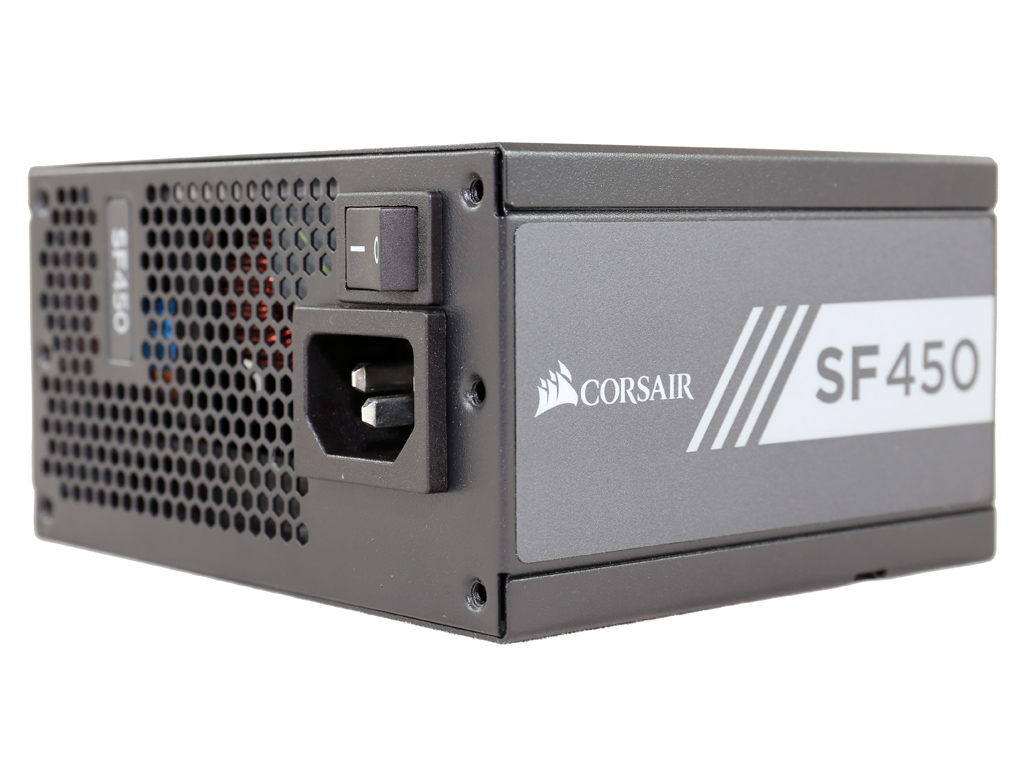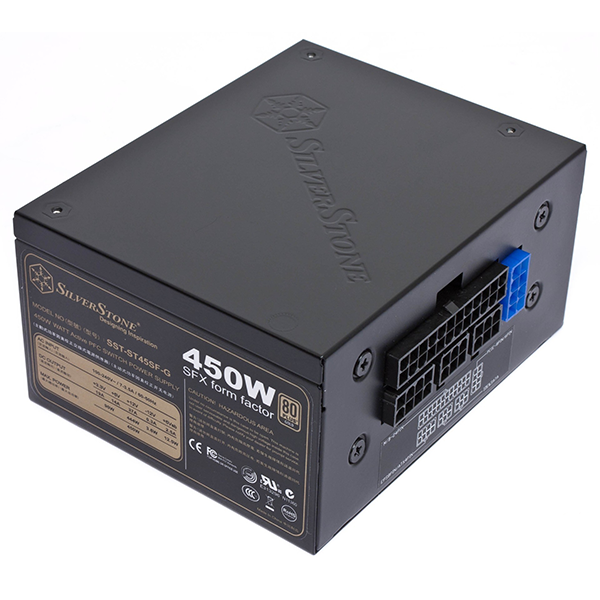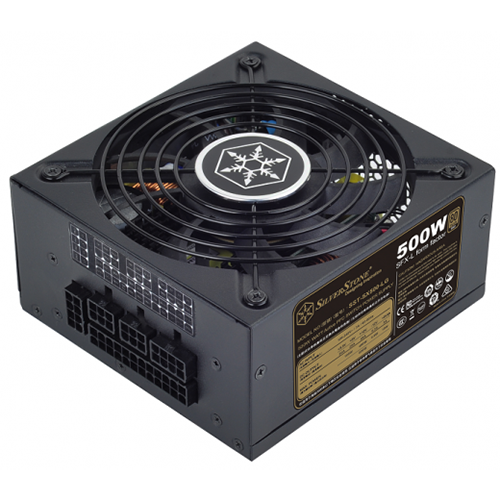Corsair SF450 PSU Review
Corsair enters the SFX PSU market with its new SF series consisting of two models at 450W and 600W capacities. Both power supplies are fully modular, promise high performance and come with 92mm fans to minimize noise output.
Why you can trust Tom's Hardware
Load Regulation, Hold-Up Time And Inrush Current
To learn more about our PSU tests and methodology, please check out How We Test Power Supply Units.
Primary Rails And 5VSB Load Regulation
Load Regulation testing is detailed here.
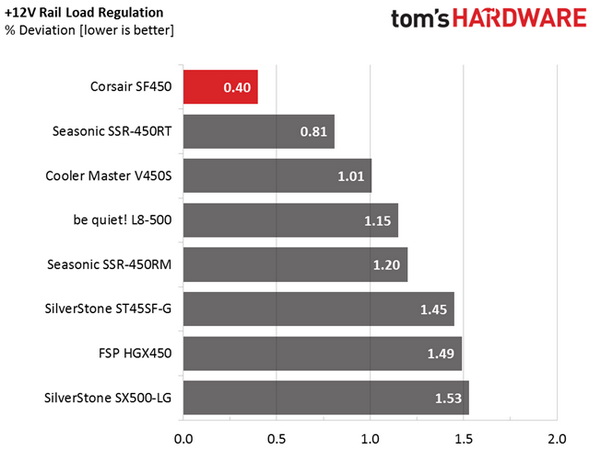
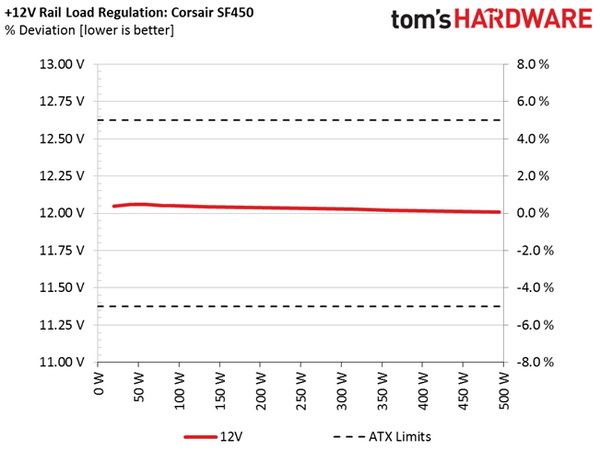
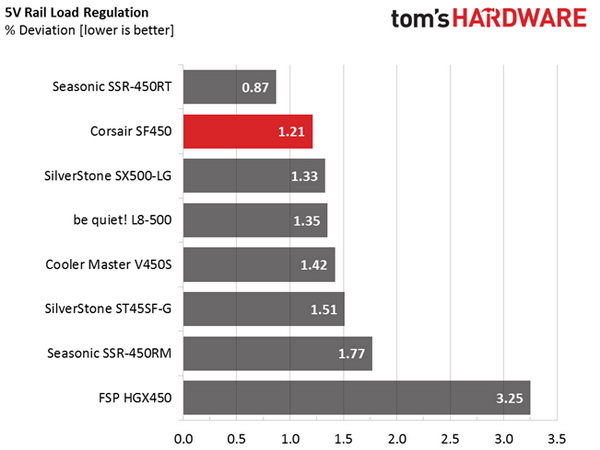
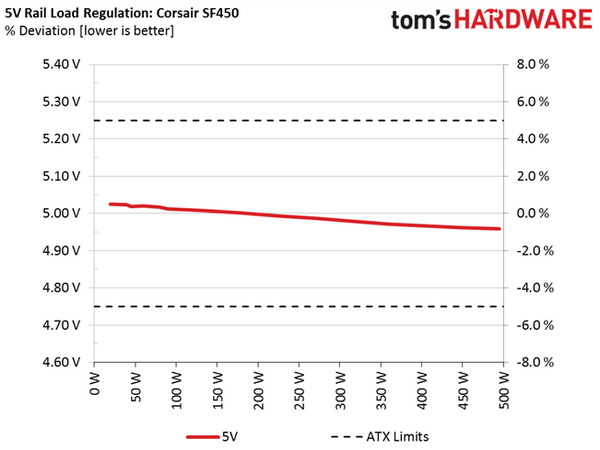
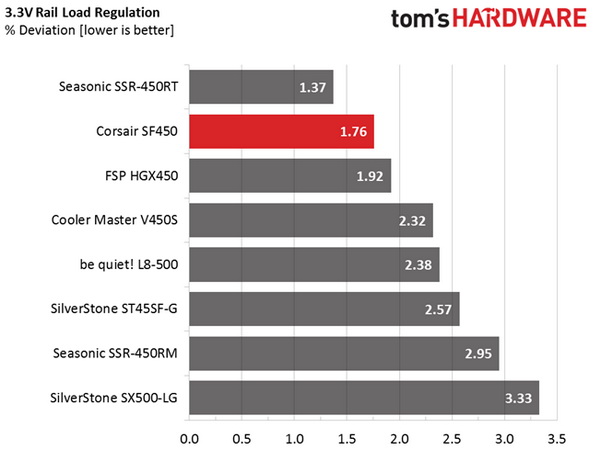

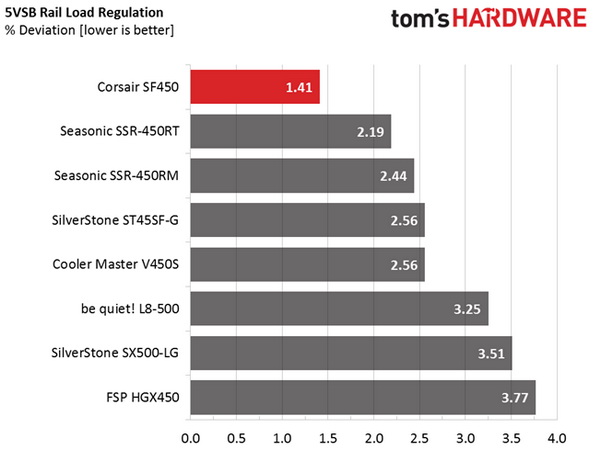
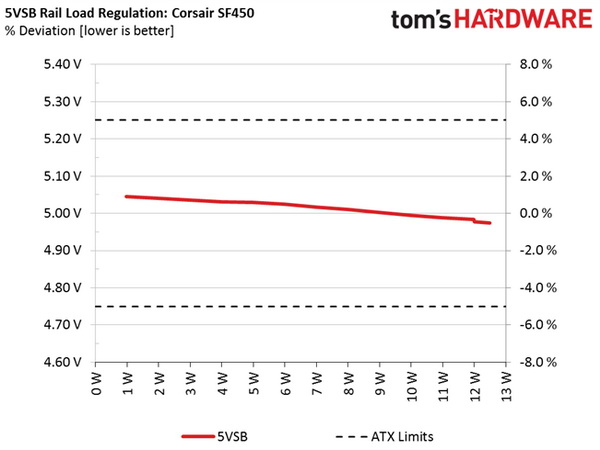
Hold-Up Time
Our hold-up time tests are described in detail here.
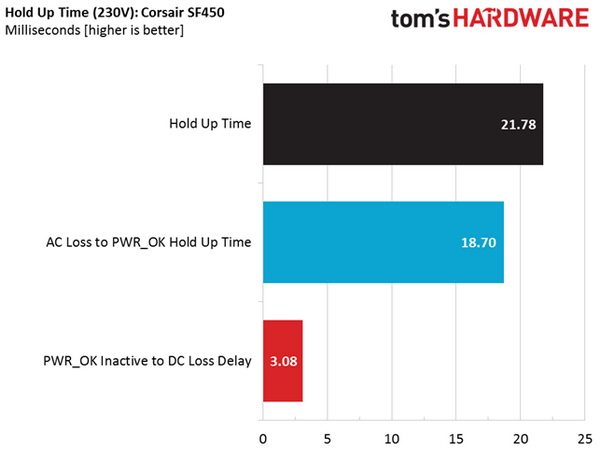
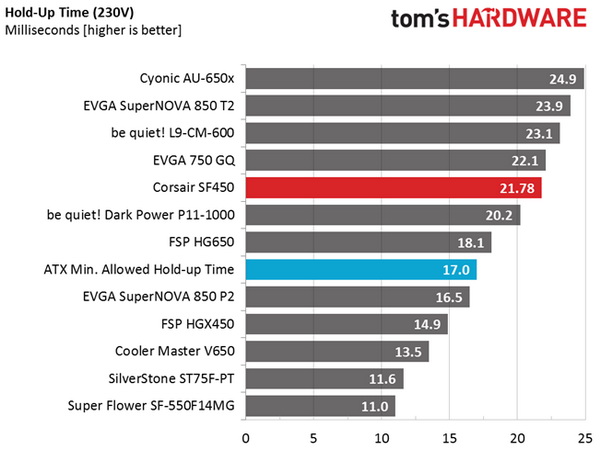
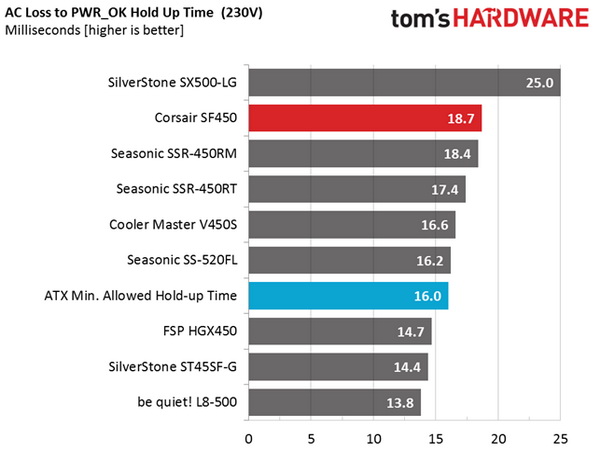

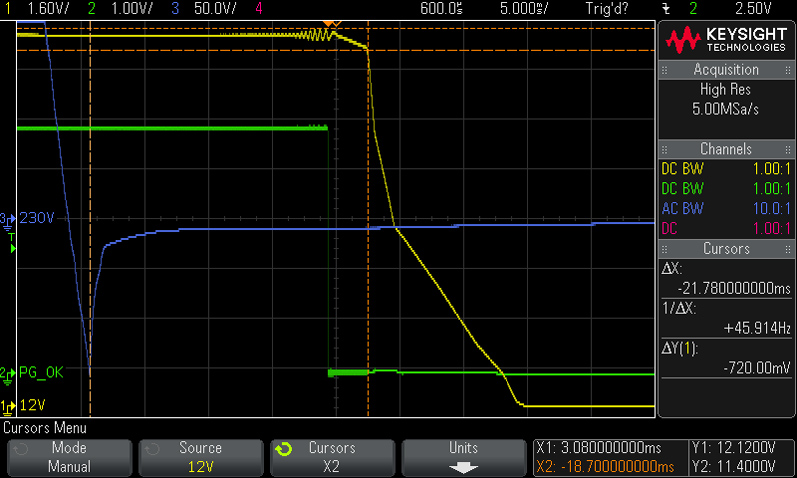
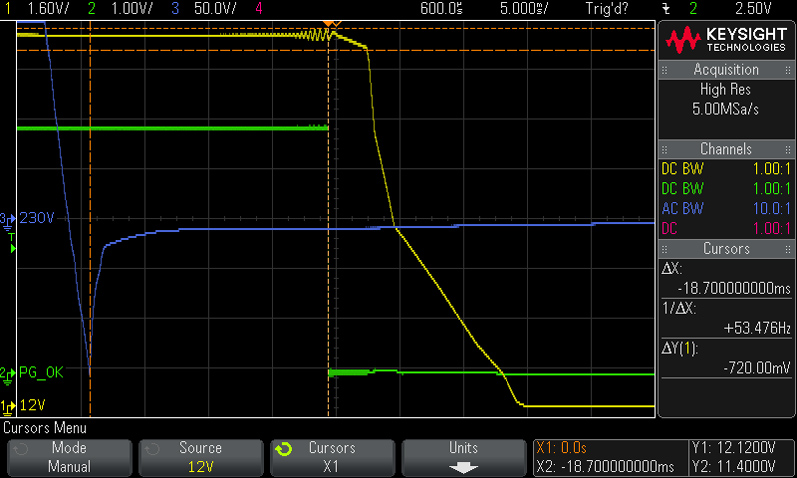
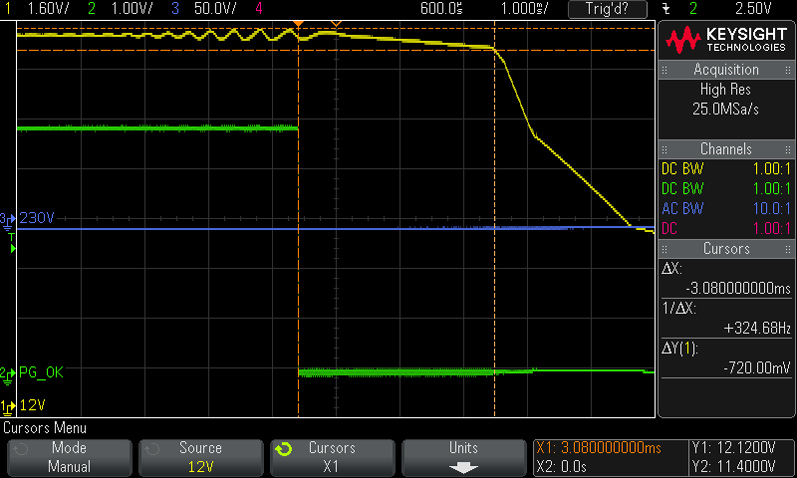
The hold-up time is pretty long, while the power-good signal drops before the rails go out of spec (as it should). Everything is fine here, and obviously the 390uF bulk cap is more than enough for this PSU's needs.
Inrush Current
For details on our inrush current testing, please click here.
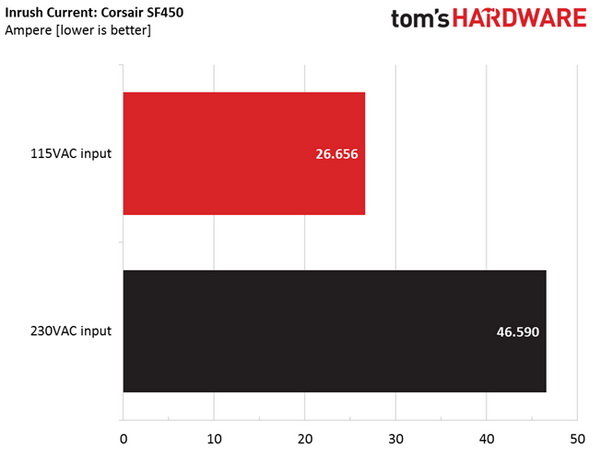
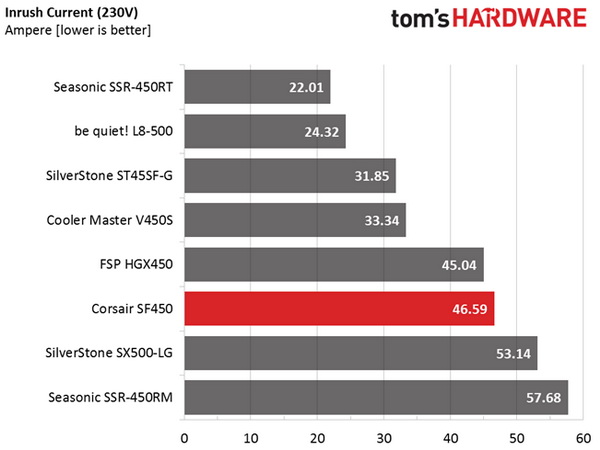
The inrush current is low with 115V and close to normal levels with 230V input.
Load Regulation And Efficiency Measurements
The first set of tests reveals the stability of the voltage rails and the PSU's efficiency. The applied load equals (approximately) 10 to 110 percent of the maximum load the supply can handle, in increments of 10 percentage points.
Get Tom's Hardware's best news and in-depth reviews, straight to your inbox.
We conducted two additional tests. During the first, we stressed the two minor rails (5V and 3.3V) with a high load, while the load at +12V was only 0.10A. This test reveals whether a PSU is Haswell-ready or not. In the second test, we determined the maximum load the +12V rail could handle with minimal load on the minor rails.
| Test # | 12V | 5V | 3.3V | 5VSB | DC/AC (Watts) | Efficiency | Fan Speed (RPM) | Noise (dB[A]) | Temps (In/Out) | PF/AC Volts |
|---|---|---|---|---|---|---|---|---|---|---|
| 1 | 1.923A | 1.994A | 1.972A | 0.991A | 44.78 | 80.41% | 1000 | 19.9 | 37.97 °C | 0.965 |
| 12.061V | 5.019V | 3.343V | 5.030V | 55.69 | 46.36 °C | 115.1V | ||||
| 2 | 4.887A | 2.990A | 2.964A | 1.191A | 89.76 | 86.90% | 1000 | 19.9 | 39.22 °C | 0.983 |
| 12.053V | 5.013V | 3.336V | 5.024V | 103.29 | 48.07 °C | 115.0V | ||||
| 3 | 8.202A | 3.497A | 3.479A | 1.395A | 134.89 | 89.24% | 1120 | 20.9 | 39.49 °C | 0.982 |
| 12.045V | 5.007V | 3.331V | 5.017V | 151.16 | 48.64 °C | 115.0V | ||||
| 4 | 11.512A | 3.995A | 3.967A | 1.596A | 179.76 | 90.18% | 1470 | 26.6 | 41.13 °C | 0.981 |
| 12.039V | 5.002V | 3.324V | 5.010V | 199.34 | 50.54 °C | 115.0V | ||||
| 5 | 14.483A | 4.998A | 4.972A | 1.795A | 224.72 | 90.59% | 1725 | 28.3 | 41.94 °C | 0.984 |
| 12.034V | 4.993V | 3.318V | 5.003V | 248.07 | 51.50 °C | 115.0V | ||||
| 6 | 17.452A | 6.014A | 5.978A | 2.000A | 269.73 | 90.42% | 2100 | 35.0 | 42.64 °C | 0.987 |
| 12.031V | 4.987V | 3.310V | 4.995V | 298.32 | 52.40 °C | 115.0V | ||||
| 7 | 20.427A | 7.023A | 6.991A | 2.200A | 314.69 | 90.33% | 2400 | 40.0 | 42.82 °C | 0.989 |
| 12.026V | 4.979V | 3.303V | 4.989V | 348.37 | 52.91 °C | 115.0V | ||||
| 8 | 23.408A | 8.044A | 8.006A | 2.405A | 359.73 | 90.02% | 2775 | 41.3 | 43.92 °C | 0.991 |
| 12.020V | 4.972V | 3.296V | 4.983V | 399.61 | 54.34 °C | 115.0V | ||||
| 9 | 26.811A | 8.555A | 8.534A | 2.410A | 404.77 | 89.71% | 3180 | 45.5 | 44.17 °C | 0.992 |
| 12.017V | 4.967V | 3.292V | 4.978V | 451.19 | 55.25 °C | 115.0V | ||||
| 10 | 30.168A | 9.072A | 9.035A | 2.510A | 449.61 | 89.34% | 3450 | 45.1 | 44.30 °C | 0.993 |
| 12.013V | 4.962V | 3.287V | 4.974V | 503.24 | 56.27 °C | 115.0V | ||||
| 11 | 33.926A | 9.073A | 9.043A | 2.512A | 494.55 | 89.05% | 3675 | 45.2 | 44.84 °C | 0.994 |
| 12.008V | 4.958V | 3.284V | 4.970V | 555.39 | 57.74 °C | 115.0V | ||||
| CL1 | 0.102A | 12.009A | 12.005A | 0.004A | 100.82 | 84.15% | 2370 | 37.8 | 43.70 °C | 0.985 |
| 12.056V | 4.983V | 3.309V | 5.031V | 119.81 | 51.55 °C | 115.1V | ||||
| CL2 | 37.481A | 1.003A | 1.003A | 1.001A | 463.56 | 90.23% | 3345 | 45.0 | 44.07 °C | 0.993 |
| 12.012V | 4.986V | 3.314V | 5.008V | 513.74 | 55.61 °C | 115.0V |
Load regulation is very tight on the +12V rail. It's good on the others as well, with 5V and 5VSB achieving 1.21% and 1.41% respectively, and the 3.3V rail a little higher with 1.76% deviation. In addition, the SF450 easily meets the 80 PLUS Gold requirements at 50% output and full load. It's only 0.1% off in the 20% load test, though we benchmark in a much hotter ambient environment than the 80 PLUS organization. It's common knowledge that a PSU's efficiency is significantly affected by high operating temperatures, and this accounts for the difference.
Up to the 50% load test, the fan's noise stays below 30 dB(A). Again, we had to push the small PSU hard to make its fan spin fast enough to exceed 40 dB(A). Under normal conditions, the fan profile is relaxed so you won't have to worry about excess noise. On the next page, you will find a graph that illustrates the fan's noise under normal conditions.
Current page: Load Regulation, Hold-Up Time And Inrush Current
Prev Page A Look Inside And Component Analysis Next Page Efficiency, Temperature And Noise
Aris Mpitziopoulos is a contributing editor at Tom's Hardware, covering PSUs.
